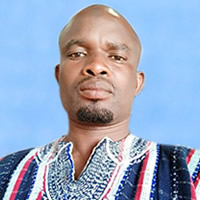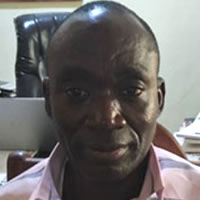Vulnerability
Introduction
Persons with disability (PWD) have been defined as those who are unable to or are restricted in the performance of specific tasks due to loss of function of some parts of the body as a result of impairment or malformation (GSS, 2012). As a result PWDs face a wide range of challenges because disability, in whatever form or type, can reduce an individual’s ability to function to his or her full potential. Disability is now considered a societal and development issue because of its direct relationship to poverty. The development of the nation depends on the important contributions of not only a segment of the population but on the collective contributions of every individual, including PWDs. This chapter reports on the socio- economic and demographic features of PWDs in the district.
Population with Disability
In the 2010 PHC, questions were asked of six major types of disability namely; sight, hearing, speech, physical, intellect, and emotional disabilities. Out of the total population of 129,248 in the district 127,293 did not have any form of disability, while 1,955 (1.5%) have one form of disability or the other. From Table 6.1, it can be said that males are more prone to disability in the district than females as 1.6 percent out of the male population are disabled in one form or the other compared to 1.4 percent of females. Out of 47,754 urban dwellers in the district, 0.5 percent are disabled and 36.4 percent are without any form of disability compared to the rural population.
Type of Disability
The data on sex of PWDs by type of disability (Figure 6.1) shows that physical disability is the most common form of disability with 362 males and 348 females having this disability. Sight is the next common type of disability which also has 38 males more than females living with it. Generally there are more males with some form of disability than females in the district.
Disability by type of locality
A total of 1,955 persons in the district have disability constituting 1.5 percent of the population. Of this number 1.6 percent are male and 1.4 percent are female. Persons with sight disability and those with physical disability are in the majority of all PWD cases constituting 0.5 percent each while Intellectual, Emotional and Other disabilities have the least proportions of 0.2 percent each. The highest form of disability among males is Sight Disability which accounts for 0.5 percent of all disability cases among males. The highest form of disability cases among females on the other is physical disability which also accounts for 0.5 percent of all disabilities among females. With respect to the locality distribution, the proportion of PWDs in the rural localities is twice that in the urban areas (63.1 percent and 36.9 percent respectively). Sight and Physical disabilities are the most pre dominant in the rural areas accounting for 0.3 percent among both males and females. The biggest disability challenge among both sexes in the urban area is physical disability which also accounts for 0.2 percent each.
Activity Status of Persons with Disability
Activity status refers to the economic and non-economic activity of persons during the last seven days preceding census night. The economically active population is made up of the employed and unemployed population. Table 6.3 shows persons 15 years and older with disability by activity status and sex. For the economically active population, 779 PWDs are 47 employed and 17 unemployed. Out of the employed PWD sight and physical disability constitute 248 and 236 persons respectively. Persons with intellectual disability account for the least number of employed persons with disability. 725 persons with disability are economically not active, out of which, physical disability constitute the highest.
Persons under 15 years and older with disability by economic activity status. From the total population in the district are PWDs. Of this number, 51.2 percent are employed, 1.1 percent are unemployed and 47.7 percent of them are economically not active. Persons with Hearing Disability constitute the majority of PWDs who are employed (70.2%) compared with 40.0 percent for those with Physical Disability with the least proportion of the employed. Persons with Speech Disability dominate among these unemployed (3.4%) against 1.0 percent for Sight Disability, the least unemployed. Persons with Physical Disability accounts for the highest proportion of PWDs who are economically not active (58.8%).
Disability, Education and Literacy
The distribution of population 3 years and older by disability type and level of education. From the table there are 1,676 persons with disability in the district of which 63.4 percent have never attended school, 27.1 percent have had basic school education while only 7.3 percent have had either SHS or Higher education.
Majority of PWDs in the district who have never been to school are those with sight disability (71.1%) and the least is persons with speech disability who constitute 47.4 percent. while majority of PWDs with emotional challenges are in the majority of those with basic education (38.3%), persons with physical disability have the highest proportion of those with SHS or tertiary education (7.1%). It will further be noticed from the table that there are more female PWDs who have never been to school (48.1%) compared with the male proportion (38.4%). Although at the pre-school level there are slightly more females than males (4.3% and 4.2%) respectively, the proportion of males is higher than females for both the basic level and SHS/Higher. It can be inferred from this that a lot more females drop out of school after pre-school than males in the district.
Date Created : 11/17/2017 8:43:15 AM




